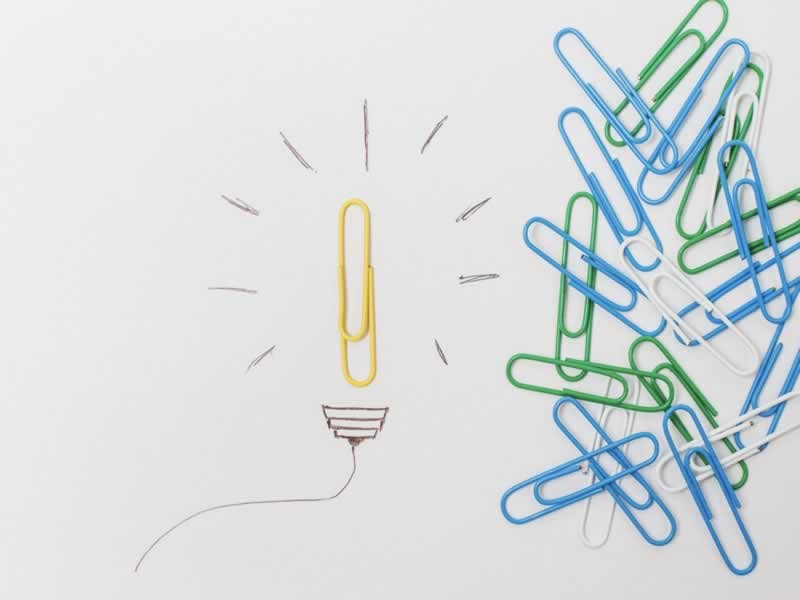Insight Blog
Agility’s perspectives on transforming the employee's experience throughout remote transformation using connected enterprise tools.
16 minutes reading time
(3185 words)
Why ChatGPT Is The Perfect Example of Incremental Innovation?
Find exciting incremental innovation examples such as ChatGPT, which focuses on permanent improvements and further developments in technology.
Incremental Innovation examples show how technology is constantly evolving and highlight its iterative nature, which emphasizes the importance of gradual yet significant improvements. This concept of innovation also helps us to see that even small, step-by-step development often leads to radical advancement in technology.
One such example is ChatGPT, an AI developed by OpenAI that perfectly reflects incremental innovation. ChatGPT, which builds on the previous achievements in natural language processing, serves as a suitable model to explain how the cumulative improvements in the way of interaction and functionality can lead to significant outcomes, implying that an iterative innovation in tech remains a relevant topic.
This content will explore the concept of incremental innovation and elucidate the advantages it offers to your company. First lets get into the capabilities of ChatGPT.
What are ChatGPT's potential capabilities?
This AI-powered chatbot, developed by OpenAI, first debuted on November 30, followed by a stable release on February 13.
Built upon OpenAI's GPT-3 "family" of large-scale language models, specifically ChatGPT 3.5, this chatbot has undergone continuous refinement. It leverages a combination of human supervision and reinforcement learning techniques, programming languages like Python, and bulletin board systems. Data collected from both ChatGPT users and online sources contribute to its ongoing improvement.
What can ChatGPT do? Its capabilities are diverse: from developing computer programs to composing music, poetry, and essays. It can also summarize lengthy documents, tackle test questions, engage in specific games, and simulate entire chat rooms. Notably, ChatGPT retains memory of previous prompts within the same conversation.
While these functionalities are promising, there are deeper questions to consider: Is ChatGPT an innovation in product or process? Is it radical or incremental?
ChatGPT represents a product innovation, embodied in the outputs it generates. This technology is poised to drive a new wave of products in 2023, transforming consumer interactions with chatbots, virtual assistants like Alexa and Siri, search engines, and email platforms. Google's introduction of Google Bard and Opera's integration of ChatGPT into its web browser underscore the industry's recognition of this innovative technology.
Will further developments in ChatGPT and its underlying technology streamline the manufacturing process of new products? The potential is certainly there.
So how are companies using generative ai?
Companies increasingly leverage generative AI technology across domains to streamline processes, enhance creativity, and improve customer experiences. In marketing and advertising, generative AI creates personalized content at a scale tailored to individual preferences and demographics.
Product design and development aids in generating innovative ideas, prototyping, and optimizing designs based on user feedback. Moreover, chatbots powered by generative AI provide instant and accurate responses to queries in customer service, improving efficiency and customer satisfaction.
Also generative AI is revolutionizing content creation in industries like entertainment and gaming by generating immersive experiences, narratives, and characters. For example, AI video generators can streamline the video creation process. Overall, companies harness generative AI to drive innovation, improve productivity, and deliver enhanced value to customers in diverse sectors.
As for its nature of innovation, ChatGPT falls more into the category of radical innovation. It brings a significant level of newness and differentiation to the field, promising to reshape how we interact with AI-powered systems in various domains.
What Is Incremental Innovation? A Complete Guide
Incremental innovation is a stepwise innovation that involves small, gradual improvements to products, services, or processes. It is the process where the existing technologies or methodologies are being honed rather than the introduction of entirely new techniques.
These kinds of innovations are extremely important as they lead to improvement in performance, efficiency, and user experience by taking the established structure as a foundation and developing further. It is a mechanism that makes it possible to extend product life and improves the competitiveness of products as products in the market. Incremental innovation is what differentiates the organizations that manage to keep up with the pace of the novelty in fast-changing industries from the ones that have to put up with the hefty risks and investments of radical innovations.
Examples of incremental innovation include:
- Product features: Adding new features or functionalities to existing products to improve performance, usability, or appeal to customers.
- Process optimization: Streamlining operational processes or workflows to increase efficiency, reduce costs, or enhance quality.
- Service enhancements: Introducing new services or refining existing ones to better meet customer needs or preferences.
- Technological advancements: Incorporating new technologies or techniques into existing products or processes to enhance their capabilities or performance.
- Design improvements: Updating product designs or packaging to improve aesthetics, usability, or brand appeal.
Companies can keep their products relevant and competitive with a continuous stream of improvements through gradual changes in technology, user interface, and overall functionality.
Key Characteristics of Incremental Innovation
Incremental innovation is characterized by step-by-step improvements, where companies work to introduce small changes to their products that make them better.
This kind of innovation is usually associated with the use of mature technology and processes that provide lower risks as they are already tested and proven. It also happens to be economical because it usually requires less investment compared to producing new products from scratch. It is not only customer-centric but also welcomes feedback and market demands to enhance customer satisfaction and loyalty. Incremental innovation also provides the chance for resource productivity and sustainability in that it enables the prolonged use of the already used products.
This strategy is primarily effective in industries where consumers expect updates and advancements that are not reflected in the change of functionality or design.
Follow us and access great exclusive content everyday: Follow us on Google News
Radical Innovation
Radical innovation fuses markets with breakthrough products or technologies that completely change how industries operate in a fundamental way, for example, from traditional phones to smartphones. An example of an incremental innovation would be smartphone enhancements, such as upgraded camera specifications or battery life. Smartphones serve as a prime illustration of incremental innovation. Since their inception, these devices have undergone numerous updates and enhancements while maintaining the core concept. It's commonplace to witness new releases featuring updated variations and formats, yet they consistently execute the same functions more efficiently.
These improvements do not result in a paradigm shift of underlying technology or market dynamics but rather in a gradual process of evolution instead of revolution.
If the innovation is radical, this might shift the market significantly, with big benefits but also big risks. Consequently, incremental innovation has a higher degree of predictability in terms of the situation of improvement and adaptation to the market, which is the safer approach to continue development and growth.
Incremental Innovation Examples
Incremental Innovation in Different Industries
The various sectors can be given as examples of Incremental Innovation as they demonstrate how the approach can be applied in different fields. The automotive industry is characterized by the introduction of improvements in the realm of road safety, fuel economy, electronic systems, and networking features like GPS and Bluetooth connectivity.
Most of these changes are restricted to new model years and do not entail any alteration of the fundamental design or form of the vehicle.
Also, in consumer electronics, the trend is to bring out versions of products with better battery life, higher screen resolutions, and better camera capabilities. They ensure that goods remain current and up-to-date, and they have a preference against significant redesign or technical evolutions.
You may also like: Best Apps for Employees: UPDATED 2022 – A Complete Guide
ChatGPT as an Example of Incremental Innovation
ChatGPT is a model for incremental innovation in the software sector.
The ChatGPT language model was brought together from the preceding language processing models, which have been adjusted and fine-tuned several times and have greatly improved its interaction and accuracy. Each new version of ChatGPT goes beyond the previous one by adding more sophistication to understanding and better response generation, thus resulting in a better user experience and widening the scope of its practical applications. These improvements go much beyond just scaling up the technology.
They are directed toward minimizing the model's error rates and boosting efficiency. The choice of a similar rule-based approach also means that the AI system could be perfected over time as the emerging technology becomes more predictable and user-friendly.
This method allowed OpenAI to update ChatGPT's features, keep its user base strong, and increase its market share.
Radical Vs. Incremental Innovation In The Context of ChatGPT
The difference between radical and incremental innovation illustrates how technology is developed and advanced. Radical innovation means sudden changes on a scale that transforms how market or technology areas are understood create new markets or completely redefine established ones.
This type of innovation is highly unpredictable, and it's hard to tell if you will succeed or fail. It can lead to high rewards but also carries significant risks.
While radical innovation refers to transitioning away from existing products, technologies, or services to introduce new paradigms, incremental innovation refers to the gradual improvement of existing products, technologies, or services, adding additional features or performance without changing the concept. This is the less risky approach; the strategy is to refine and improve the current market position.
Free ebook: How To Get Your Intranet Off The Ground
Evolution of AI Technology
AI technology has witnessed both radical and incremental innovations.
The first AI models, rule-based systems, were replaced by machine learning models that changed the entire perspective of AI. Establishing these fundamental models made several more advanced neural networks and deep learning technologies possible, making analyzing a large amount of data without human intervention possible.
The trend of the AI models is that of gradual advances in the capabilities of each model, making the next one a more advanced version of the previous one.
From Early AI to ChatGPT
Before ChatGPT, several pivotal models contributed to its development. Technologies like Google's BERT and OpenAI's GPT-2 created precedents by using transformer architectures to enhance meaning and generate text similar to that of humans. Such models were also progressively developed in architecture, training algorithms, and data preparation, leading to better and more contextual text generation.
ChatGPT represents the next incremental step that builds upon the advancements of the previous technologies. It has incorporated optimal applications and new training methods to create more realistic interactions.
Examples of AI Innovations Leading to ChatGPT
ChatGPT is both a radical and an incremental innovation itself. The original GPT concept was radical, introducing a new way of using an unsupervised learning technique to produce text that resembles human writing. However, the transition from GPT-2 to GPT-3 and then to ChatGPT illustrates the nature of incremental innovation.
Each version brought on enhancements, including bigger model sizes, better-trained datasets, and better tuning of the algorithms, which refined the model and made it more applicable.
The gradual improvements in these AI models have made them more competent and accessible, and as a result, we can see how incremental innovation pushes technology forward.
Practicing Radical Innovation In Entrepreneurship
Radical innovation in the business sphere is based on creating cutting-edge products, services, and business models that meet customers in a way they have never seen before or didn't know about.
Entrepreneurs engaged in radical innovation usually see their endeavors as a way of finding complex problems that can be solved using new and significantly different approaches than those that already exist.
This strategy can revolutionize customer experience and make established market dynamics unstable, which could result in customer preference and market share growth at an impressive rate.
Risks and Rewards of Radical Innovation
Radical innovation entails a high degree of risk, but at the same time, it opens the way to gain a lot of possible profits.
The main danger lies in the high probability of failure due to the unpredictability of the unknown, which is the main reason for losing so many companies pioneering technology or business. With a radical innovation concept, the market acceptance can be unpredictable, and the start-up costs of research and development can be overwhelming.
However, the outcomes of this strategy can be advantageous, too, for instance, seizing the leadership in new market segments, achieving high growth rates, and building substantial barriers to entry for competitors. Companies like Tesla in electric vehicles and SpaceX in private space travel have shown that extreme innovations can be transformative and help win a dominant position in new industries.
Contrasting Radical and Incremental Innovation with Real-World Examples
Unlike radical innovation, incremental innovation concentrates on existing markets and technologies, trying to improve products or services in such a way that their quality is better but, at the same time, remains on the same level. For instance, Apple's release of the iPhone was a revolutionary innovation that created a whole new category of smartphones.
However, its subsequent updates have been incremental, where the company focused on enhancing the camera quality, battery life, and processing power. Such a gradual diversification initiative allows the firm to still be dominant in the market and retain its customers without the risks that drastic changes may bring.
Similarly, pharmaceutical firms usually resort to incremental innovation when they tweak existing drugs to enhance their effectiveness or minimize side effects instead of developing entirely new medication classes, which would be radical and risky. This strategy secures even and monotone progress and profitability with lower risk and investment than the dangerous and unpredictable world of radical innovation.
How can incremental innovation improve products and services?
Incremental innovation is a dynamic approach that can significantly enhance products and services, driving continuous improvement and customer satisfaction. One effective method involves integrating feedback from customers, who often provide valuable insights into areas for enhancement. By actively soliciting and incorporating customer suggestions, businesses can better tailor their offerings to meet consumer needs and preferences.
This iterative process fosters a culture of responsiveness and adaptability, resulting in products and services that resonate more deeply with the target audience.
Another avenue for achieving incremental innovation is observing how products or services are utilized in real-world scenarios. Businesses can identify friction points or barriers to adoption by studying customer behaviors and interactions. Analyzing these insights can uncover opportunities for refinement and optimization, leading to incremental innovations that address specific pain points or enhance user experiences. This proactive approach not only strengthens the company's competitive edge but also fosters a deeper understanding of customer needs and behaviors.
Furthermore, embracing a culture of experimentation and continuous learning is essential for fostering incremental innovation within organizations. By encouraging employees to explore new ideas, test hypotheses, and iterate on existing solutions, businesses can foster a culture of innovation that drives ongoing improvement and growth.
Additionally, leveraging emerging technologies and data analytics tools can provide valuable insights and facilitate informed decision-making throughout the innovation process. Ultimately, embracing incremental innovation as a strategic imperative allows companies to stay agile, responsive, and competitive in an ever-evolving market landscape.
Benefits of incremental innovation for your company
Incremental innovation, often referred to as continuous improvement or iterative enhancement, offers several benefits for companies:
- Cost-effectiveness: Incremental innovation typically involves making small, gradual improvements to existing products, processes, or services. This approach is often less costly than developing entirely new innovations from scratch, making it more accessible for companies with limited resources.
- Risk mitigation: By building upon existing foundations, incremental innovation reduces the risk associated with radical or disruptive changes. Companies can test new features or enhancements on a smaller scale before fully integrating them into their offerings, thus minimizing the potential for costly failures.
- Customer satisfaction: Incremental improvements can help address specific pain points or desires expressed by customers, leading to greater satisfaction and loyalty. Continuous enhancements demonstrate a commitment to meeting customer needs and staying ahead of competitors.
- Competitive advantage: Constantly evolving products or services through incremental innovation can help companies maintain a competitive edge in the market. By staying responsive to changing consumer preferences and market trends, businesses can position themselves as industry leaders.
- Flexibility and adaptability: Incremental innovation allows companies to adapt more quickly to evolving market conditions or technological advancements. Since changes are made gradually, organizations can pivot their strategies more easily in response to new opportunities or challenges.
- Employee engagement and empowerment: Encouraging a culture of continuous improvement fosters creativity and innovation among employees. When workers are empowered to suggest and implement small improvements, they feel more engaged and invested in the company's success.
- Long-term sustainability: Consistent incremental innovation can contribute to the long-term sustainability of a company by ensuring its products or services remain relevant and competitive in the marketplace. This adaptability is crucial for weathering economic fluctuations and industry disruptions.
Incremental innovation also offers other numerous advantages for companies:
- Speed: Incremental innovations reach the market faster as they focus on improving existing products and services rather than starting from scratch. This swift deployment enables companies to respond more promptly to evolving customer needs and market demands.
- Cost-effectiveness: By building upon existing foundations, incremental innovations are inherently more cost-effective. They require fewer investments in development and research since the groundwork has already been laid. This efficiency allows companies to allocate resources more strategically, maximizing their return on investment.
- Enhanced user experience: Incremental innovation results in greater relevance to the customer, leading to improved user experiences. By continuously refining products and services based on customer feedback and market trends, companies can enhance customer satisfaction, retention, and overall business sustainability.
- Lower risks: Incremental innovation involves lower risks compared to radical innovations with high failure rates. Since it's a more linear and controllable process, companies can mitigate risks more effectively. Testing and implementing small changes gradually reduce the likelihood of costly failures, ensuring smoother transitions and operations.
- Competitive advantage: Incremental innovations allow organizations to create competitive advantages more safely by evolving their current products and services gradually. By staying responsive to customer preferences and market trends, companies can maintain their position as industry leaders and differentiate themselves from competitors. This ongoing evolution strengthens their market presence and resilience over time.
In summary, incremental innovation offers a balanced approach to driving growth and improvement within companies, providing speed, cost-effectiveness, enhanced user experiences, lower risks, and sustained competitive advantages.
Wrapping up
Incremental innovation, as in ChatGPT, is crucial to the sustainable growth of technology. Incremental innovation enables continuous improvement of existing structures. Such innovative developments allow for consistent growth and adaption to market requirements without the high-risk factors accompanying radical innovations.
The improvements made by ChatGPT from one version to the next show the power that can be unleashed when small steps are added together to refine the technology and improve the user experience significantly.
In the bigger picture of tech development, finding a balance between incremental and radical innovation is one of the most critical aspects, as it helps companies stay competitive while at the same time reaching for breakthroughs.
Categories
Blog
(2590)
Business Management
(318)
Employee Engagement
(204)
Digital Transformation
(172)
Intranets
(119)
Growth
(118)
Remote Work
(61)
Sales
(48)
Collaboration
(37)
Culture
(29)
Project management
(29)
Customer Experience
(26)
Knowledge Management
(21)
Leadership
(20)
Comparisons
(5)
Ready to learn more? 👍
One platform to optimize, manage and track all of your teams. Your new digital workplace is a click away. 🚀
Free for 14 days, no credit card required.















